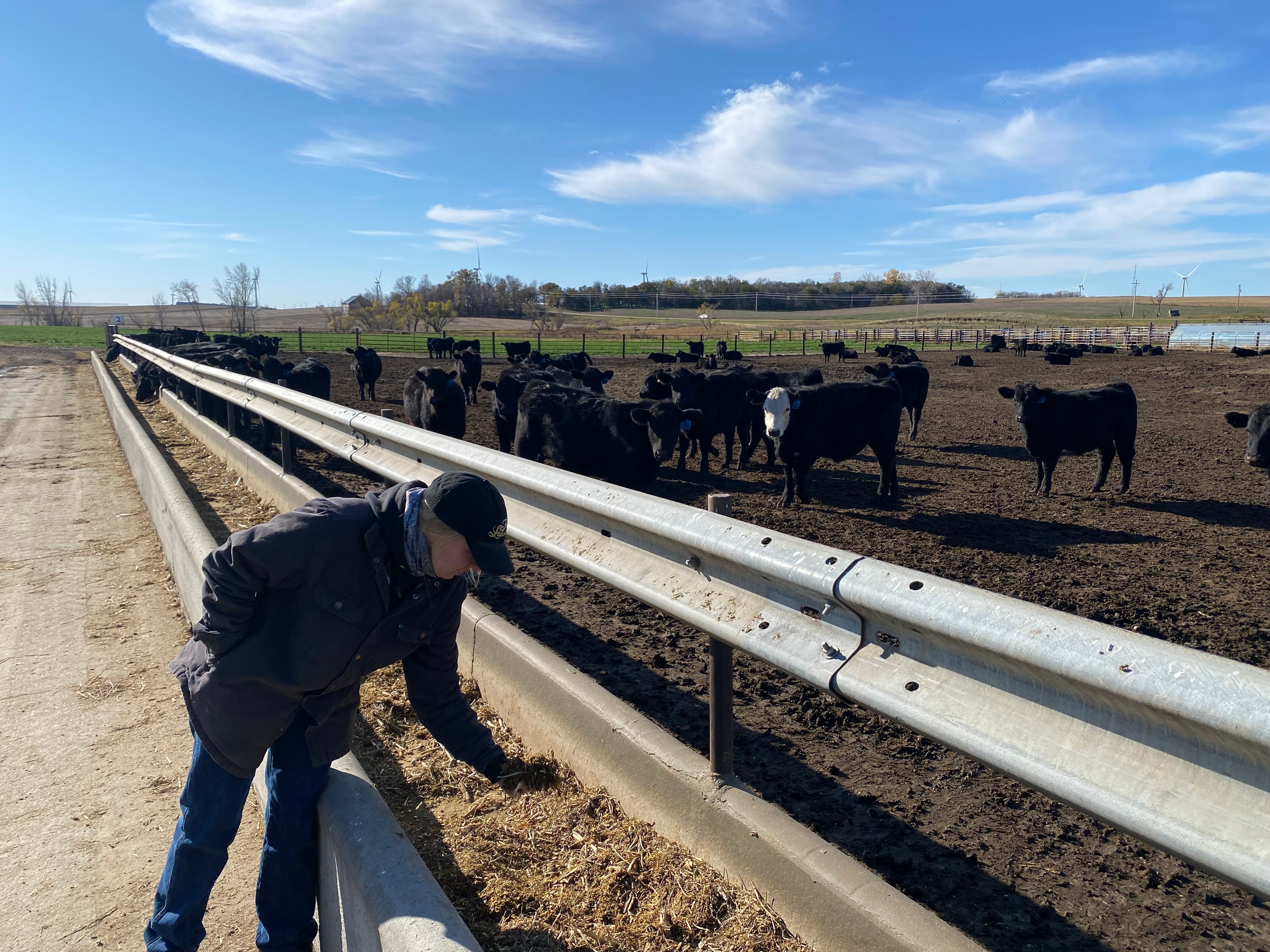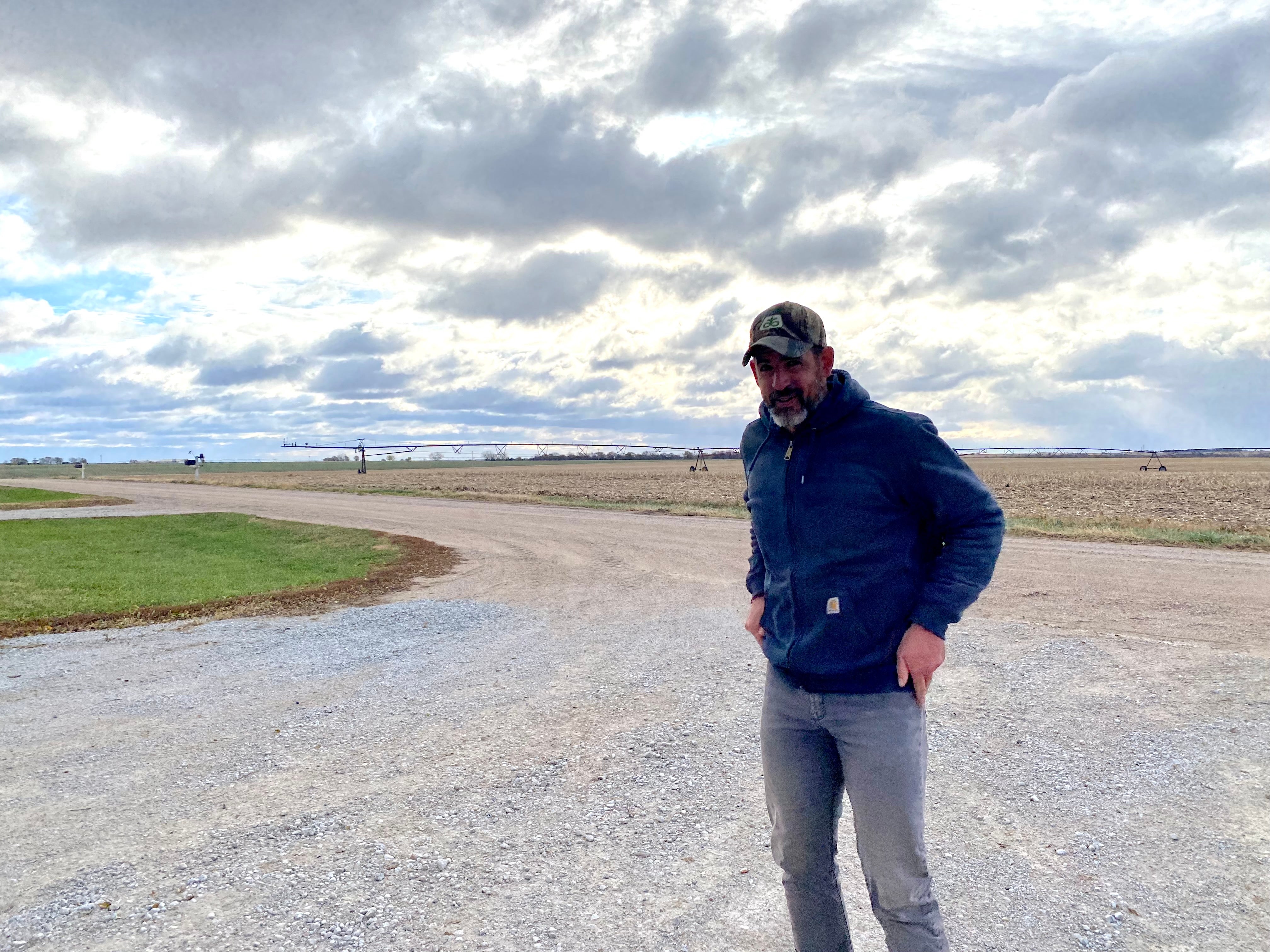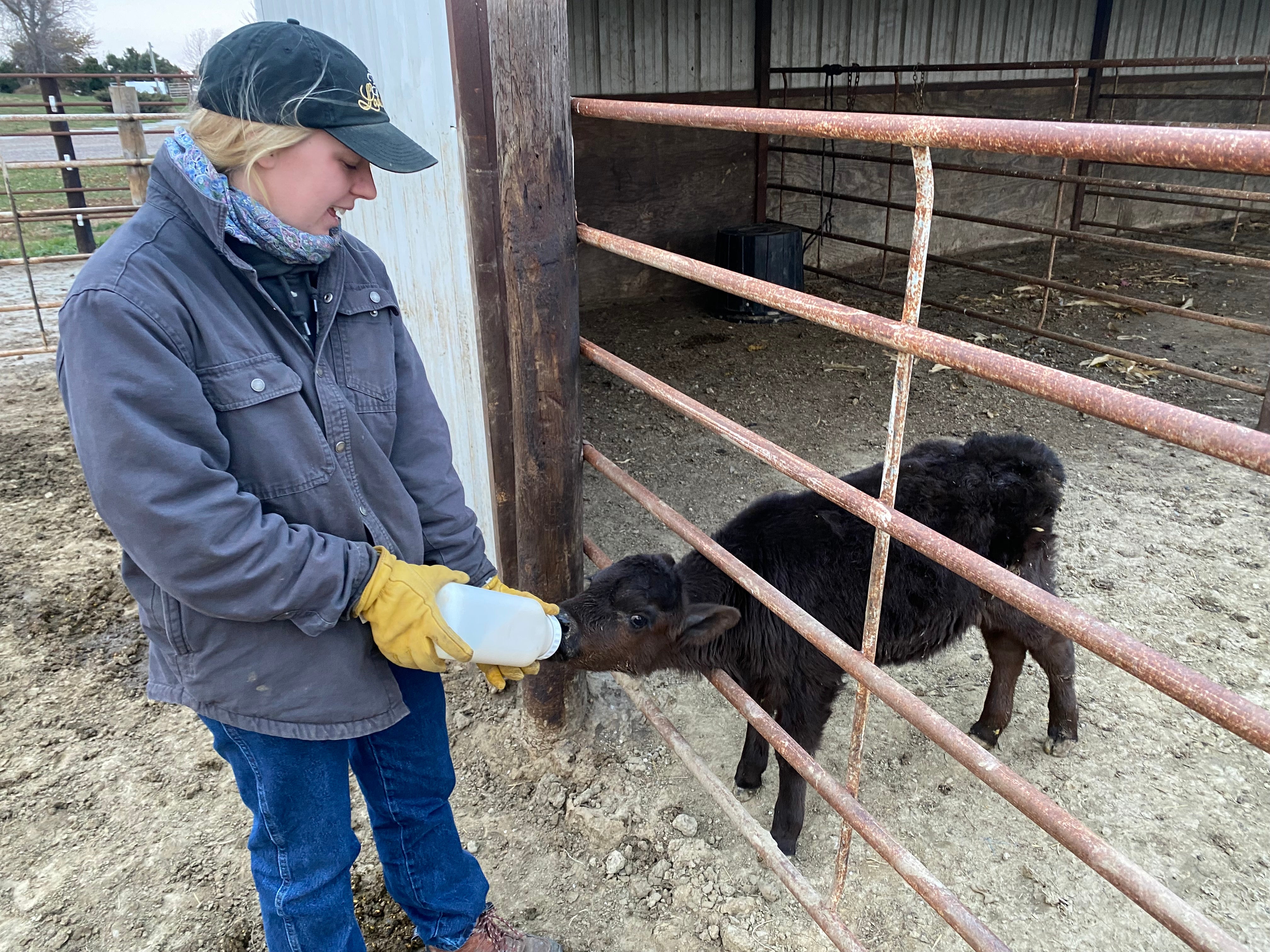Long prized for its cattle, Nebraska is joining the plant-based meat boom
In a state known for its beef prowess, farmers are now growing peas for the production of plant-based meat alternatives, writes Richard Hall

Your support helps us to tell the story
From reproductive rights to climate change to Big Tech, The Independent is on the ground when the story is developing. Whether it's investigating the financials of Elon Musk's pro-Trump PAC or producing our latest documentary, 'The A Word', which shines a light on the American women fighting for reproductive rights, we know how important it is to parse out the facts from the messaging.
At such a critical moment in US history, we need reporters on the ground. Your donation allows us to keep sending journalists to speak to both sides of the story.
The Independent is trusted by Americans across the entire political spectrum. And unlike many other quality news outlets, we choose not to lock Americans out of our reporting and analysis with paywalls. We believe quality journalism should be available to everyone, paid for by those who can afford it.
Your support makes all the difference.If you were to design the perfect ecosystem for raising cattle, it would look a lot like Nebraska. Forty thousand square miles of pastures and rangeland stretch across the state. Those vast grasslands are ideal for cattle to graze, and in the process renew the earth and prompt new growth. The soil is fed by aquifers and thousands of miles of rivers and streams, allowing it to produce an abundance of corn with which to feed those same cattle.
It is for all of those reasons and more that Nebraska became known as the “Beef State”. You’ll be reminded of this fact everywhere you go while you’re there, on licence plates and in the form of cow statues, murals and Omaha steak specials. It is not only the state’s biggest industry, but part of its identity.
But the same ecosystem that gave Nebraska its bounty of beef is now providing fertile ground for another industry which, if not a threat, is almost certainly a competitor. Here in the beef state – of all places – fake meat is on the rise.
Plant-based alternatives to beef have gained a foothold here in the form of the humble pea, which is a main ingredient in meat substitutes due to its high protein value.
The battle between fake meat and the real thing has become something akin to a culture war across the country. Could Nebraska become a new frontline?
Eric Thalken is one of a growing number of Nebraska farmers turning to the crop. He grew up in a farming family in cattle country, way out in the wild, empty west of the state. He moved to Philadelphia and back again before he took over a 2,000-acre organic farm near Lincoln that grows, among other things, peas. He supplies his crop to Puris, which produces pea protein and is subcontractor of Beyond Meat, a market leader in plant-based foods. While nearby Montana and North Dakota lead the country in pea production, Puris says it has increased production of peas in Nebraska by 81 per cent since 2019 and expects to see more growth in the state.
It was no ideological pull that led Thalken to start growing peas, but a very practical one.
“They are unique among crops in that they leave more energy in the soil than it started with,” Thalken tells The Independent in an office on his farm.
They also fit in well with his crop rotation, so he can ensure he makes the most of his land throughout the year. He harvests the peas in July and still has time to plant forage before the winter. He sends the peas off to make fake meat, then brings in cattle to graze. The irony is not lost on him.
“We often said jokingly that we’re going to grab both of these markets,” he adds.
Most of Nebraska’s peas are currently turned into pet food, but the alternative meat market is big, and expanding. It is projected to grow nationwide from $12.1bn (£9.1bn) in 2019 to $27.9bn by 2025, and peas are the fastest growing segment of that market.

Market leaders Beyond Meat and Impossible Foods produce beef-like mince and beef-like burger patties made from peas and soy, among a plethora of other meat imitation products. They are designed to cook and look like the real thing. You can find Beyond Meat in Starbucks breakfast items and “Impossible Whoppers” in Burger King across the US. Faux meat and alternative proteins have seen a funding boom in the last year. Venture capitalists and investors handed out $3.1bn in 2020, up from $1bn the previous year, according to protein research and lobby group the Good Food Institute.
Although some farmers have grabbed a piece of the emerging market, the rise of fake meat has raised eyebrows here in Nebraska, where beef is worth an estimated $12bn to the state’s economy. Keen to protect their product from plant-based imitators, and perhaps learning lessons from the meteoric rise of almond and oat “milk” alternatives at the expense of dairy, Nebraska lawmakers have sought to curtail them in the state legislature and in Congress. Senator Deb Fischer, a member of the Senate Agriculture Committee and a rancher herself from Nebraska’s west, accused companies like Beyond Meat of “trying to piggyback on really, really good nutritious, safe beef”. A bill she introduced in Congress seeks to codify the definition of “beef” as meat derived from cattle and introduce punishments for deceptive labelling of plant-based products.
The Plant-Based Foods Association called the move an “unprecedented power grab”, and hit out against “political threats from special interests”.
But the battle has not been limited to Nebraska. The beef industry nationwide has stepped into the fray, deploying its powerful lobbying groups to take the fight to meat substitutes, questioning the health benefits of its plant-based rival. In 2019, the Center for Consumer Freedom, a PR firm backed by meat producers, ran an advertising campaign questioning the ingredients used in imitation burgers. One advertisement asked: “What’s hiding in your plant-based meat?”
Nebraska, in general, has responded forcefully to any challenge to beef’s supremacy. When the governor of neighbouring Colorado called for people to avoid meat for one day a week, Nebraska’s own governor Pete Ricketts called it a “direct attack on our way of life”.
Currently, the gap between the two markets is not very close. Global sales of meat were around $1.7 trillion in 2019, while alternative meat was $2.2bn. But figures on both sides have talked up the threat posed by the other.
Patrick Brown, CEO of Impossible Foods, said it was his company’s mission to “completely replace the animal-based products in the food world within the next 15 years”, adding that the transformation “is inevitable”.
That transformation is being driven in large part by concerns over the meat industry’s contribution to climate change. Plant-based alternatives have drawn investment from billionaires Bill Gates and Richard Branson primarily as a way to reduce emissions.
The average cow will in one year belch around 220lb of methane gas, which is more than 80 times more potent than carbon dioxide in warming the atmosphere in the first 20 years after it reaches the atmosphere. Animal farming is responsible for 14.5 per cent of global greenhouse gas emissions and the production of red meat accounts for 41 per cent of those emissions, according to the United Nations’ Food and Agriculture Organization. It’s not just the gases that cattle emit, but the land they take up. The reduction of forests worldwide for cattle grazing is a huge contributor to global emissions.
A landmark United Nations report from 2019 on the effects of climate change found that cutting meat consumption, especially in the west, could contribute significantly to reducing the effects of climate change.

In the US, the picture is less severe, however. Direct emissions from US beef cattle contribute approximately 2.1 per cent of US greenhouse gas emissions, according to the Environmental Protection Agency. Adding in total emissions from feed, fertiliser inputs and transporting cattle, beef cattle production represents 3.7 per cent.
But the debate about the future and sustainability of beef looks different to the farmers that produce it here in Nebraska, whose traditions and culture are so intertwined with their product.
Hannah Borg is a sixth-generation cattle farmer. Her father, her uncles, her grandparents and their grandparents all raised cattle in the same few square miles here in Allen, in Nebraska’s north, near the border with South Dakota. The town graveyard is full of her ancestors who moved here from Sweden more than 130 years ago and farmed the same land. All of that is to say, her family takes their responsibility as conservers of the land very seriously.
As Borg sees it, the conversation about sustainability and climate change in the cattle industry has long ignored farms like her family’s, which have made huge progress in efficiency and operate with very little waste.
“We’re more sustainable now than we’ve ever been,” she says. “There’s no waste. We use every single part of the product and it benefits the next part of the cycle. It’s a closed cycle.”
The Borg farm is typical of the many family-run operations across the state. Their house is within throwing distance of the cattle yards. Beyond that, the chicken shed and a barn full of feed, fields of corn stretch into the distance. It is so picturesque that Ford came to film a commercial here, with Hannah in its starring role.
Standing in front of a few dozen steers, as they amble over to her curiously, she explains the closed loop under which the farm operates.
“You can see the crop is grown over here, you see it put into a [feed] pile, you can see it put into the ration, you see the cattle eating it, you see the manure and you see the manure spreader to put it out into the field,” she says.
“I don’t know how someone could stand here on our farm and not see how sustainable it already is.”
In short, everything needed for the production of their cattle is grown and produced within a few square miles. There are no emissions for transporting feed from far away. All of the crops they grow get used. She points to a large garbage container next to the house: “That’s only for household waste. We don’t need one for the farm.”
“We’ve used these sustainable practices for years and years, people don’t realise that,” says Borg.
It is also true that cattle farmers are producing more beef with fewer heads of cattle than ever before. Fifty years ago there were around 140 million head of cattle to meet demand in the US, now it’s only 90 million, and they are producing even more meat.
Borg says there is a disconnect between how people view the cattle industry as a whole and farms like her family’s.
“We’re the stewards of the land and the livestock. And so when you have that disconnect of people just driving past and making decisions not based on facts, it makes it hard sometimes,” she says.

The global cattle industry, of course, operates differently from the Borg family farm. Demand for beef is expected to skyrocket across Asia in the next 30 years, and population growth worldwide will increase demand for meat across the board. Environmentalists say that rapid growth will increase the carbon footprint of the cattle industry dramatically.
But here in Nebraska, the battle between fake meat and the real thing may not even be a battle at all. Sara Place, an animal scientist who has worked in livestock sustainability for 12 years, says the two industries can co-exist.
“The tension of beef vs pea production, or more broadly, animal agriculture vs plant agriculture is largely overblown,” she says. “Crops and animals are largely integrated in multiple ways – we likely shouldn’t think of them as separate industries. For example, many alternative proteins use parts of plants – not the whole plant. As a result, there are leftovers, and these can often end up as livestock feed.”
Nebraska is especially well-placed, she adds, to take advantage of both industries.
“[It’s’] a state that really highlights the benefits of cattle – they can upgrade human inedible plants to higher-quality nutrition and use landscapes that cannot be cropped,” she says. “An example here is the Sandhills region in western Nebraska – it cannot be cropped sustainably, but is great for grazing cattle and other ruminants.
“Americans will likely continue to be omnivores, and animal source foods like beef are nutrient-dense. The future will include multiple sources of protein, just as it does today.”
The challenge going forward, she adds, lies in “lowering the impact of all agricultural production – plant and animal – and having robust rural livelihoods”.
Nebraska’s cattle ranchers will likely sleep easy knowing that demand for beef is not likely to disappear overnight, and the state’s reputation as the Beef State means it is well-placed to weather any short-term shifts.
In any case, Thalken, the pea grower surrounded by cattle ranchers, says farmers aren’t likely to start battling it out in the fields.
“I don’t participate in that food fight,” he says. “There’s some weird thing between some consumers and a certain segment of farmers where they’re just at loggerheads over food.”
He says the choice is good for everyone – farmer and consumer alike.
“You can go to Walmart and get Impossible chicken nuggets, or you could get a cheap pork chop. The variety is pretty amazing. And if that’s the direction that people want to go, we grow for it.”
In the meantime, he has a message of peace for the combatants.
“Can’t we all just get along, man?”